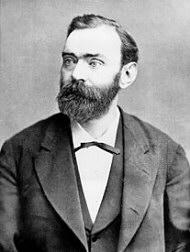Portland cement (often referred to as OPC, from Ordinary Portland Cement) is the most common type of cement in general use around the world, used as a basic ingredient of concrete, mortar, stucco, and most non-specialty grout. It usually originates from limestone. It is a fine powder produced by grinding Portland cement clinker (more than 90%), a limited amount of calcium sulfate (which controls the set time) and up to 5% minor constituents as allowed by various standards such as the European Standard EN 197-1:
(The last two requirements were already set out in the German Standard, issued in 1909).
ASTM C150 defines Portland cement as "hydraulic cement (cement that not only hardens by reacting with water but also forms a water-resistant product) produced by pulverizing clinkers consisting essentially of hydraulic calcium silicates, usually containing one or more of the forms of calcium sulfate as an inter ground addition." Clinkers are nodules (diameters, 0.2–1.0 inch [5–25 mm]) of a sintered material that is produced when a raw mixture of predetermined composition is heated to high temperature. The low cost and widespread availability of the limestone, shales, and other naturally occurring materials make Portland cement one of the lowest-cost materials widely used over the last century throughout the world. Concrete is one of the most versatile construction materials available in the world.
Portland cement clinker is made by heating, in a kiln, a homogeneous mixture of raw materials to a calcining temperature, which is about 1450°C for modern cements. The aluminium oxide and iron oxide are present as a flux and contribute little to the strength. For special cements, such as Low Heat (LH) and Sulfate Resistant (SR) types, it is necessary to limit the amount of tricalcium aluminate (3 CaO·Al2O3) formed. The major raw material for the clinker-making is usually limestone (CaCO3) mixed with a second material containing clay as source of alumino-silicate. Normally, an impure limestone which contains clay or SiO2 is used. The CaCO3 content of these limestones can be as low as 80%. Secondary raw materials (materials in the rawmix other than limestone) depend on the purity of the limestone. Some of the materials used are clay, shale, sand, iron ore, bauxite, fly ash, and slag. When a cement kiln is fired by coal, the ash of the coal acts as a secondary raw material.

